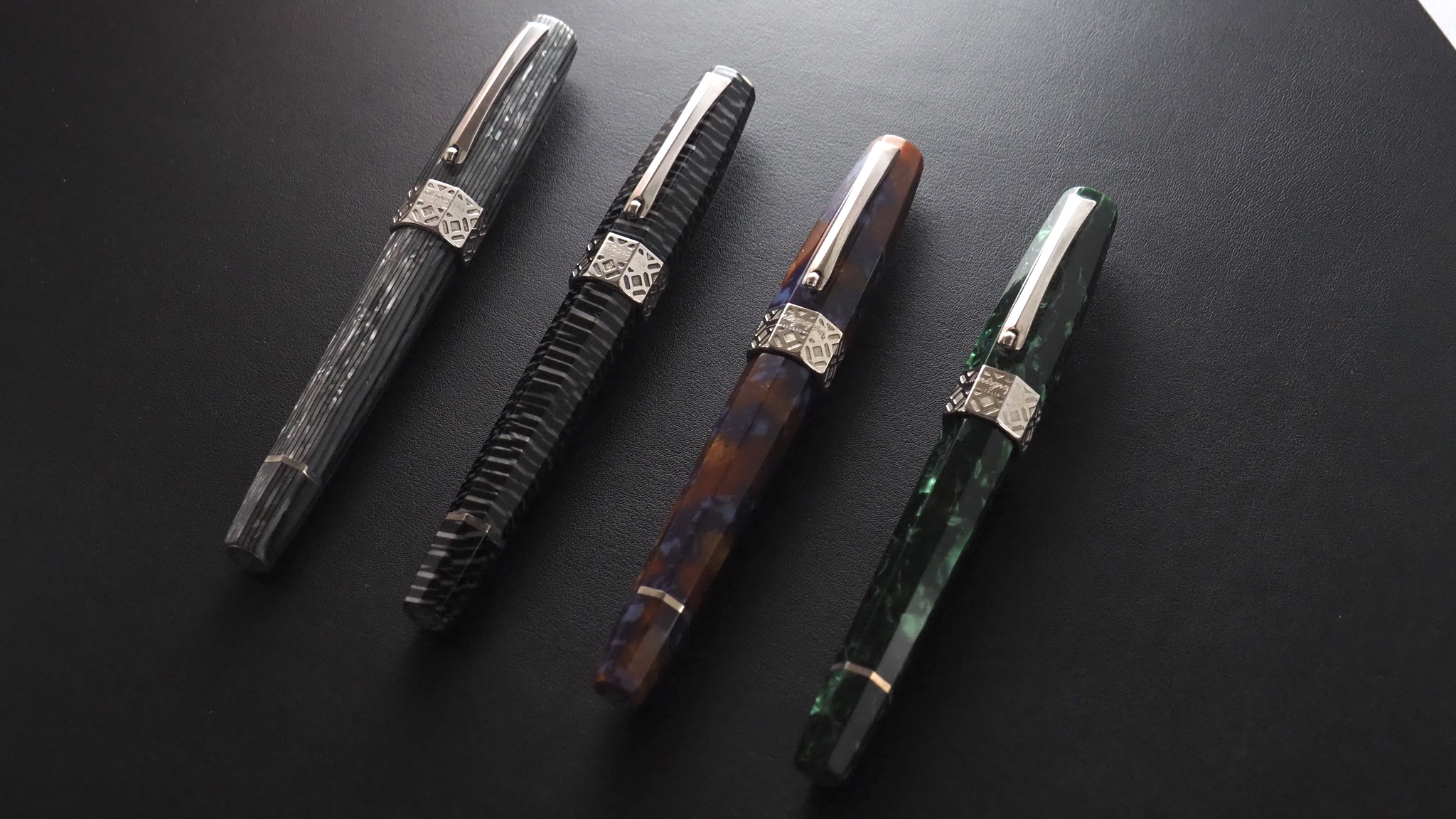For many pen lovers, celluloid harkens back to the golden age of the pen industry. Renowned for its comfortable and velvety hand-feel and its durability, celluloid is considered one of the premier materials used in the penmaking process. But if that’s the case, why isn’t it more common? And, from a consumer side, why is it so expensive?
In an investigation with Inkstable, it appears that the expense of celluloid today has a lot to do with the common economic principle of supply and demand. Today, hardly any pen manufacturers use celluloid and, because of this, smaller batch productions are done, resulting in higher overall costs. Brands like Montegrappa, Maiora, and the recently-resurrected OMAS have all dabbled in celluloid, but all in all, the sight of a celluloid pen is a rarity on the market.

Which is a shame, when one thinks about it. Celluloid pens are remarkably durable and have an exceptional level of vibrancy when mixed with colors. Up until the advent of plastics and acrylics, celluloid was the de rigeur selection for luxury pen making. But, unfortunately, acrylics are cheaper and faster to produce, making it the preferred option for manufacturers who produce large-bulk production lines for their global markets.

This leads me to the second point on why celluloid pens are so expensive. It’s because celluloid is unlike any other material for making a beautiful pen. To produce celluloid, a manufacturer must first produce cellulose through breaking down the raw materials of wood, cotton fiber, or other organic matter into a pulp. The cellulose is then mixed with nitrate to create a material that has elastic qualities but is stable enough to produce a durable material when hardened. During the liquid phase of the material, color extracts are added and blended into the cellulose, giving it that distinctive swirl and color dimension to the pen.

But the beauty and integrity of celluloid is also dangerous. In the above-mentioned process, the nitrate added into this material is highly flammable. That flammability poses a threat which can ultimately be a risk that modern manufacturers don’t want to take. In fact, the material is so flammable that celluloid must be stored for upwards of ten years to avoid any additional risk. During that resting period, the flammable gas is emitted from the celluloid, making it safe to craft pens. This additional risk isn’t necessary for acrylics and metals, making them a preferred method for large-scale, quick-sale productions.
Finally, one sees expenses when considering the second-hand and deadstock market. This is because, currently, there are no contemporary manufacturers dedicated to large-scale celluloid manufacturing. Yes, there is celluloid being produced for the eyewear industry, but those are thinner rods which cannot be used for pens. That is why many brands are forced to go seeking alternatives when sourcing for celluloid. Take, for example, OMAS, which was known for using vintage and deadstock rods to create their celluloid pens, going back into the archives of celluloid producers and using up stock they could find to create limited pens. The very nature of using limited resources means that the price will be inflated to cover the raw expenses of buying the material – and the time needed to craft these sorts of pens for the modern user. That means that, more often than not, celluloid pens have some sort of hand-crafted nature to them, making the price account for human intervention versus machine automation.

All in all, while the sticker price of a celluloid pen make seem higher than what you may pay for a comparable resin, acrylic, or even metal pen, one cannot deny the intrinsic beauty and velvety feel of a celluloid pen when in use. It’s a testament to the popularity of this material that, nearly a century later, pen lovers still sing the praises of celluloid and flock to new celluloid pens when they’re available.
So if you ever seen a celluloid pen at a pen show or for sale from a contemporary brand, I suggest taking a close look and, if possible, writing with one. I promise you, you won’t think the price is so high after that.
Condividi:
- Click to share on X (Opens in new window) X
- Click to share on Facebook (Opens in new window) Facebook
- Click to share on WhatsApp (Opens in new window) WhatsApp
- Click to share on LinkedIn (Opens in new window) LinkedIn
- Click to share on Pinterest (Opens in new window) Pinterest
- Click to share on Telegram (Opens in new window) Telegram
- Click to email a link to a friend (Opens in new window) Email




Leave a Reply